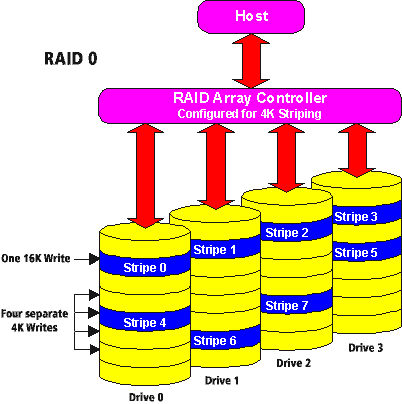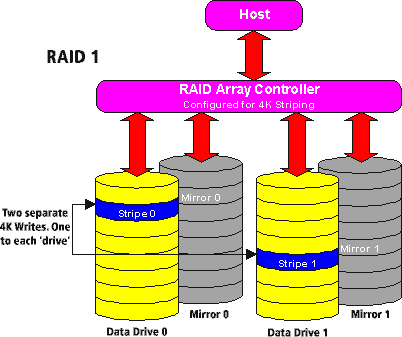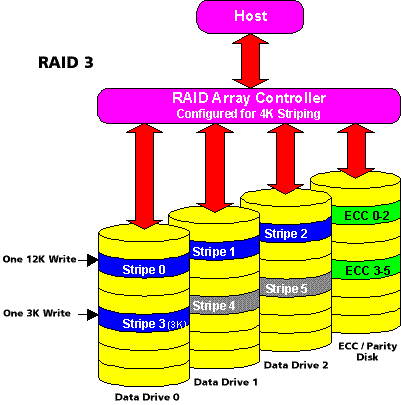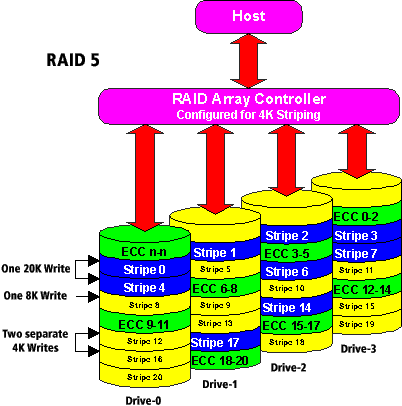RAID
& Disk Array Recovery
at
what RAID is.
What
is RAID?
RAID
– Redundant Array of Intelligent/Inexpensive Disks.
RAID
is a great system for increasing speed and availability of data as it offers
considerably more data protection than non-RAID disk systems. However, its
management of the disks and the data distribution across them can be extremely
complex.
Vogon
has extensive experience of recovery from RAID, spanned and striped systems. We
only normally require just the storage devices in order to recover lost data. If
you are asked for the original RAID or array system by a Data Recovery company,
you must ask yourself whether that company really understands how the system
works.
Different
RAID levels are utilised for different applications, depending upon the
fault tolerance, speed of access required or the average size of the files being
stored.
RAID
systems do fail!
Not something that a RAID vendor would want to admit to, but complex redundant
systems can suffer from failure. Often not a fault of the technology used or the
design of the array, but typically failure to correctly implement these systems
leads to a single point of failure that can cause catastrophic data loss.
No
matter how well designed or implemented the system is, there is still one very
complex factor that causes most RAID array problems we see – the human being.
Mistakes are easy to make and the more complex the systems become, the more
potential there is for mistakes to occur.
Vogon
has an excellent working relationship with all of the major peripheral, software
and media manufacturers and has developed custom software and firmware for major
American and Japanese peripheral manufacturers and software companies.

Vogon
RAID and array recovery processes
Using Vogon disk
recovery processes, coupled with there ability to produce a safe 'copy'
of the complete volume, allows them to process an array as a collection of image
files. Our Data Recovery systems have the capacity to absorb most server array
volumes.
A
project team of Data Recovery Hardware Specialists and Data Recovery Software
Specialists is formed to deal with each recovery. While the failed drives are
recovered onto the Data Recovery servers by the hardware team, the software team
evaluate the RAID or array images, work out the configuration and determine the
extent of the corruption that typically occurs when these systems fail in
operation.
The
advanced software tools we have written will extract the data from the images.
When a drive image is not available, the tools can reconstruct the data
'on-the-fly' in the same way that the RAID rebuild process would have done on
the original system.
At
all stages, controlling the tools is an experienced software expert who closely
understands the software tools, the array configuration, the file system on the
array, what the problem is and why the array failed in the first place.
The
data will be returned using the customer's chosen media.
What
are the RAID levels?
RAID
0 – Striped drives without parity, a non-redundant group

This is the fastest and most storage efficient configuration of a group of
disks, but it has no fault tolerance; if one drive fails the whole array fails.
As there is no parity, it offers the best storage efficiency. The striping
allows read/write operations to occur simultaneously on each disk for
speed.

RAID 1 – Mirroring drives

The fastest fault tolerant array configuration but the least storage efficient
array, it's probably the most commonly used system today. As other array
configurations require three or more drives, it is the only choice in a
two-drive system. The two drives in the 'mirrored pair' appear to the operating
system as one; they always mirror each other. Should a drive fail the data is
available from the other. As the data is always the same on the two drives, read
performance is almost doubled, as consecutive reads can occur on each drive at
the same time. Write performance is not improved.
RAID
2 – Sector striping with a disk holding Error Correction Code (ECC)
information
As
all hard disks have ECC data built into every sector, this configuration has no
advantages over RAID 3 and is not used.
RAID
3 – Sector striping with a disk holding parity information

A single disk holds the parity information and the data integrity checking
relies on ECC on the disk drives themselves, as with RAID 2. Because parity
information is held on a dedicated drive, any single drive in the array can fail
without data being lost. Data can be rebuilt onto a replacement drive using the
remaining information and the parity information. To maintain performance when
transferring small files, synchronised motors may be required on each disk. Read
and write operations cannot be overlapped, but as consecutive reads can occur on
each drive at the same time, read performance is improved.

RAID 4 – Very large sector striping with a disk holding parity
information
This
is a faster version of RAID 3, in that the complete read of a file can occur on
a single disk. Write performance is not improved as the parity drive needs
updating with every write operation. As there are no real benefits over RAID 3
and write performance is worse than RAID 5, this configuration is not
used.
RAID
5 – Large sector striping data with a rotating parity stripe

With no dedicated parity drive the write performance is better than RAID 3, with
overlapped data and parity update writes. Read operations can be interleaved as
all drives contain data stripes. RAID 1 performs faster but RAID 5 provides
better storage efficiency. Parity update can be more efficiently handled by RAID
5, by checking for data bit changes and only changing the corresponding parity
bits. For small data writes improvements here are lost as most disk drives
update sectors entirely for any write operation. For larger writes only the
sectors where bit changes need to be made are rewritten and improvements made.
Maintaining parity information reduces write performance – in some cases as
low as one third the speed of RAID 1. For this reason RAID 5 is not normally
used in performance critical processes.
Striping
RAID accomplishes the formation of a single logical drive from multiple units
through a process called striping. Striping involves logically arranging
information so that individual files are spread among a group of drives. A
stripe segment can be as small as a single byte, or as large as multiple
sectors. Striping has the advantage of faster data access because individual
drives can be accessed in parallel. The disadvantage is that the array capacity,
once formatted, is fixed, meaning expansion is not as simple as adding drive
modules.
